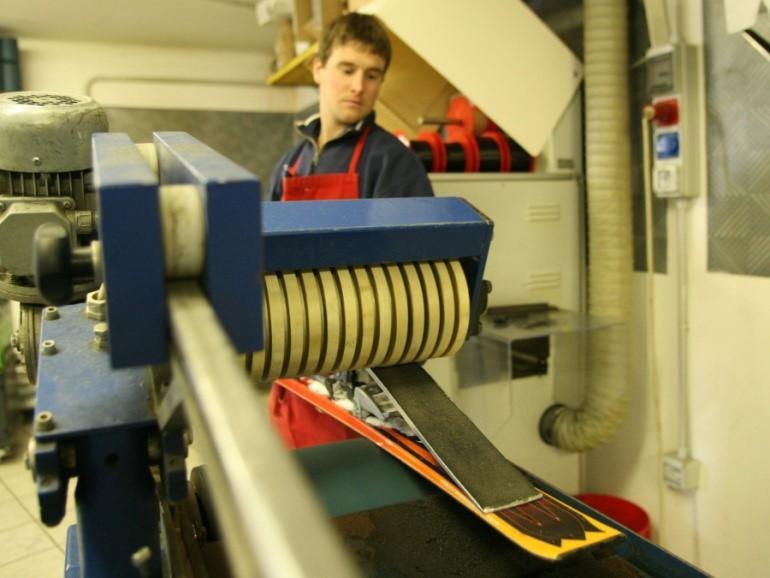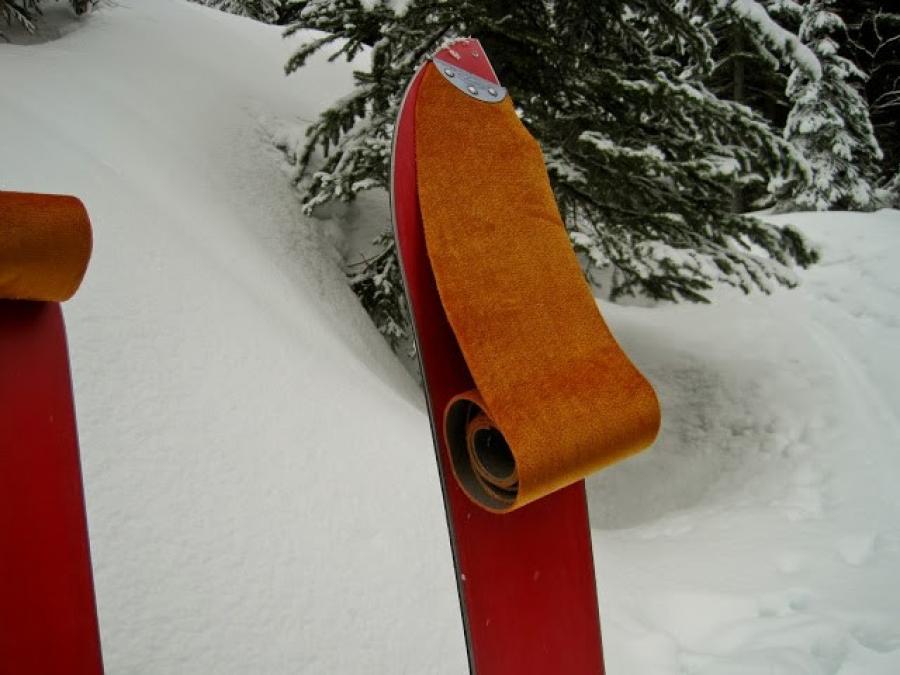As autumn blends into winter, its time to prepare for a new ski season! Don’t leave this until the last minute, your preparation can start today.
As we rediscover our ski gear, stowed away for many months we need to check and reacquaint ourselves with each piece of kit. We have to be thorough when tooling up, it’s a serious game which we must be well prepared for. On a big backcountry ski day, all our gear including clothing, has to be ‘just right’ to get the most from the trip.
Personal fitness also needs to be considered. Wind the clock back, by the end of April, with several weeks skiing behind us, our bodies are tuned and adapted to the activity and environment. Our knees and legs are strong, and long ascents are dispensed with easily. Not so in the late autumn, we have to re-trigger our muscle memory and get back into shape for what can be at times, a very strenuous activity.
Here are 4 ways to start preparing NOW for the coming season..
1. Precision tune
Well tuned skis perform significantly better than neglected skis. Waxed bases glide better, and sharp edges have more grip. If our skis are not tuned and serviced we can get left behind or end up teetering on steep icy slopes.
You have 2 choices, either a shop (machine) service or a DIY tune.
Edge and Base servicing
A machine tune involves grinding the ski base and edges until the all the scrapes and burrs disappear. This can produce fantastic results, however some machine operators will grind away much more of the base than necessary (for a quicker job), obviously this drastically shortens the life of the ski. You should be happy that the ski shop really knows what they are doing and the ski technician is experienced and cares about the result. Typically a shop service will cost between €25 and €50.

DIY Service
Alternatively, if you have the tools, a DIY service can produce excellent results; it is far cheaper and keeps you in charge of the skis! Superior results are achievable by hand tuning the ski edges & bases than can be had using a machine - without the additional wear caused by the machine operation. After all, World Cup ski tech's hand tune their athlete's skis, they don't put them through a machine! To edge and wax you will need a bench with a vice (better with two), an electric iron, ski wax, a good quality edge sharpening tool and a scraper.
During the summer months, the best way to store your skis is with a liberal coating of wax (use more wax than you normally would). To ready your equipment for your first ski trip, simply take a Perspex scraper, and scrape the excess wax off the base as much as possible. Use the little notch in the scraper to scrape the wax off the edges, otherwise they will not grip! Then take a nylon brush and brush any remaining wax out of the bases working from tip to tail. You are now ready to hit the slopes!
2. Hardware Check
Skins
It always surprises me how durable skins are and how long they last, even when heavily used. But nevertheless, at the start of the season you should check the fit and condition of your skins (especially the glue). Poorly fitted or glued skins can fall off; this can potentially ruin a ski tour, and also be outright dangerous. Once the sticky side has become covered in snow, it can be very difficult to get them to re-stick especially in very cold, dry conditions. We always recommend your skins have a tail clip as well as a front clip.
Do my skins need re gluing? When stuck together, well glued skins should be difficult to pull apart, additionally they should never roll off the ski due to poor adhesion. If the skins are loosing their stickiness, then you can top it up with skin glue (available form any ski shop), you should always do this at least 24 hours before you intend to use them. You can apply the glue on top of the old glue but you must use it sparingly. Many people put on too much, which causes it to roll into balls and can become an unpleasant sticky mess.
If the glue is old and dry you should consider getting the skins re-glued. Again you can have this done professionally or DIY. First of all, all the old glue must be removed. This is only possible with a heat scrapper, and is a mucky job which produces fumes. When the new glue is applied, this should be done thoroughly but sparingly, making sure no glue touches the wrong side of the skin. A professional job will typically cost between €40 and €60.
Binding check
Check the general condition of the binding, if your bindings are old; consider applying a small amount of grease to the moving parts. Click your boots into your bindings to check that the spacing (forward pressure) and release values haven’t somehow changed. Check your din settings, for an experienced skier this should be their weight in kg divide by 10 (90kg weight = din of 9).
Boot check
If your boots have screws or bolts anchoring parts and pieces, check to see if any are loose (this is good to do a few times during the season too). Use thread locker, or nylon nuts, to prevent gradual loosening. If your boots have never been particularly comfortable, get your liners remoulded now. Modern heat mouldable liners can be baked several times without detriment.
Transceiver Check
Hopefully, your shovel and probe will be just the same as when you left them however your transceiver needs a more though check. Firstly replace the batteries, and check the different functions. If you have a spare transceiver (or use a friends) do a few practice searches, this not only checks the machine is working properly, but also re-familiarises you with the search process.
3. Gear check
It’s good to check the whole outdoor wardrobe during the autumn inspection:
• Helmet? How old is it? Have you had any hard knocks wearing it? If in doubt, get a new one.
• Goggles and sunglasses. Are the lenses and the sealing foam in good shape?
• Repair, replace or treat old gloves. SeamGrip glue is very effective on burst seams and Nikwax are the leaders in post market waterproofing. Consider taking a spare pair of gloves in your pack, an older pair is perfect for this.
• Do a smell check of your base layers. Old synthetic base layers can retain odour. Get some fresh ones if needed, or possibly invest in Smartwool.
• Check over your insulating pieces and shell clothing. This is a good time to wash them and/or re-waterproof them. Check for tears in down jackets and patch as needed. Again Nikwax sell a full range of rejuvenating products. Although it is worth noting that down and waterproof clothing should be washed rarely and strictly according to the manufacturers instructions.
• Check all zips work smoothly. If not, try washing them with soapy water or applying zip lube. Get any fully broken zippers repaired or replaced.
• If you plan to drive your own car, make sure your car is ready for the winter. Think about your tyres, snow chains, battery and glow plugs (diesel). Carry plenty of spare clothing in the car (or even a sleeping bag!), be prepared if there are problems on the road.
4. Physical Training
Its easy to forget how physically demanding mountain sports can be, so if the edge to your fitness is a little dulled, now’s the time to prepare. Many people think of alpine skiing as an anaerobic exercise because it appears to be an ‘explosive’ sport, with its rapid movements and reliance on muscle tension. To some extent this may be true for recreational piste skiing, however the backcountry skier needs to have a much higher level of aerobic fitness. Long days on the hill will inevitable include walking (in ski boots), skinning, carrying and also coping with a challenging snowpack.
Aerobic
We recommend any strenuous exercise that is sustained for an hour or more and gets you breathing hard. The best exercises are those which we carry our own body weight. Running, cycling and hill walking have always been favourites. I much prefer using the great outdoors for my pre-season training rather than stuffy gyms. Try to push a little beyond your comfort zone, so the body has to adapt to higher work loads. Increase the frequency of exercise as your ski trip approaches. Hill walking with a rucksack is particularly effective as it works the most poignant muscle groups. The key here is long duration, stamina rather than power. Don’t to forget to enjoy it; getting fit is a rewarding challenge.
Specific exercises
The muscles in the front and back of your thigh are the main power muscles used during skiing. We can train these muscles with wall squats, lunges and steps (machines or real steps!). Next, the all important muscles that control our hip rotation. Perhaps our favourite is to hang form a bar and whilst keeping the torso straight, rotate the hips from side to side. Alternatively, lie on your side and lift and hold you leg for a few seconds, this can be done with either straight legs or bent knees.
Using ‘quick stepping’ movements is also excellent training. A good place to begin is jumping sideways on and off a step, start with a low step and build up to a higher step – this will particularly help with skiing bumps and quickly varying terrain where fast movements are essential.
Bolt on days
If you have booked on a challenging ski course with Mountain Tracks and have doubts about your fitness or skill level, a simple remedy is too bolt-on one or two warm up days before you start. Immediately your body will begin adapting back into the sport, and you will start your course felling stronger and more confident.
 Off-Piste
Off-Piste Ski Touring
Ski Touring Via Ferrata
Via Ferrata Ice Climbing
Ice Climbing Alpine Glacier Trekking
Alpine Glacier Trekking Worldwide Trekking
Worldwide Trekking





 Travel Website Development
Travel Website Development